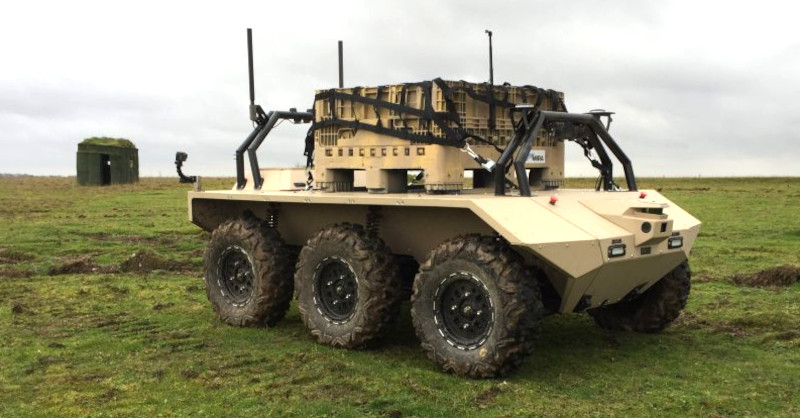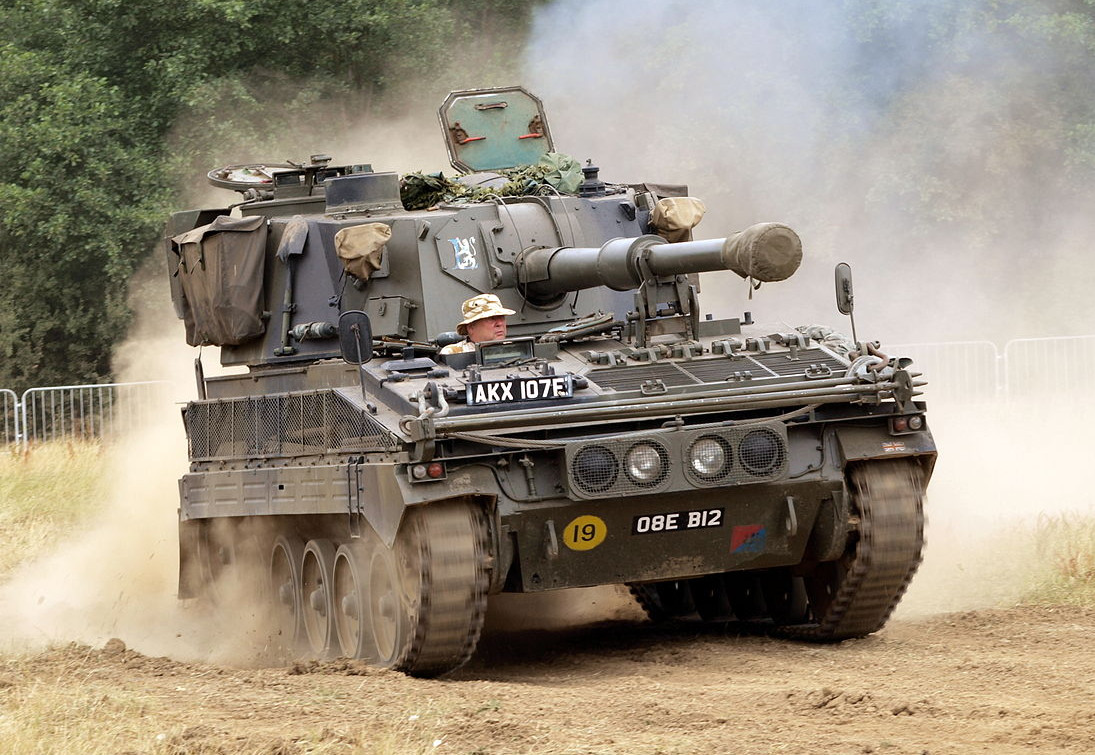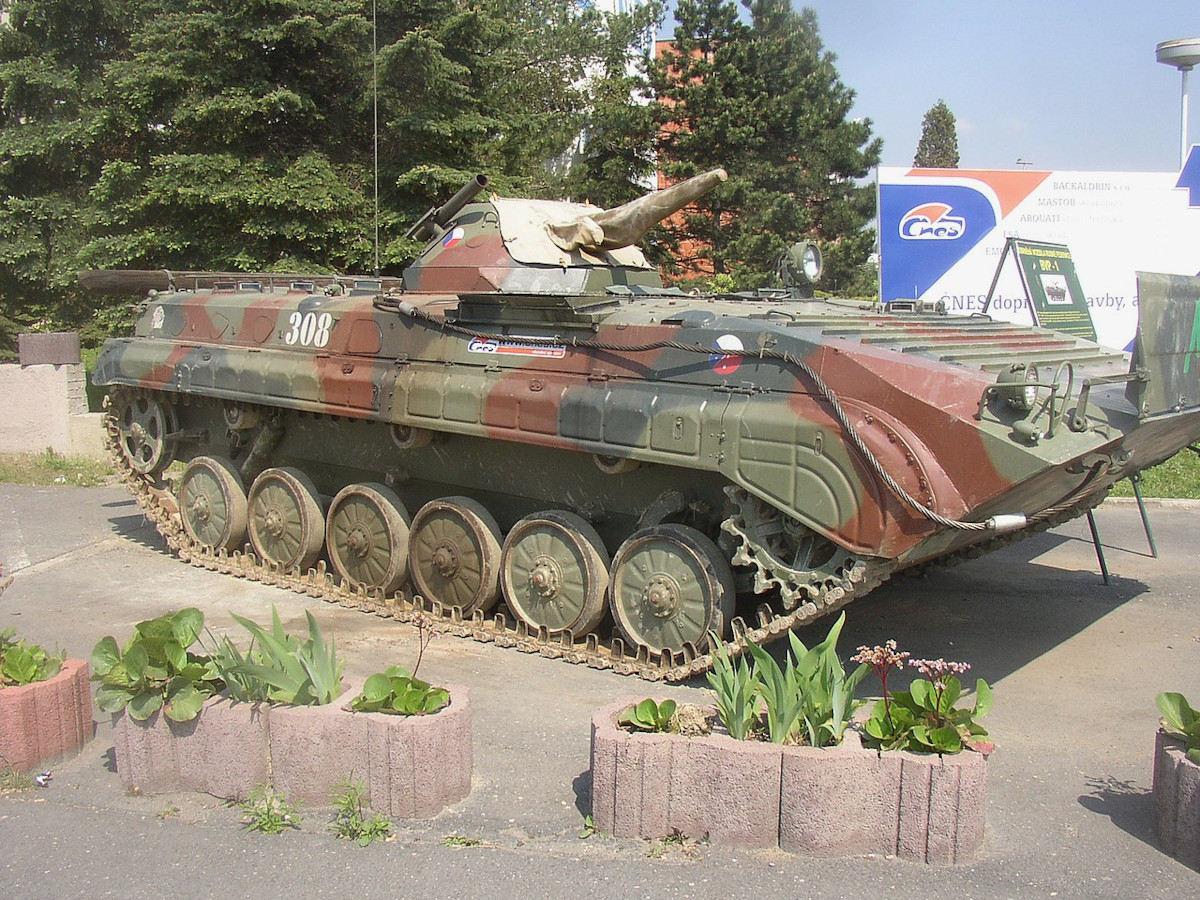Drones and ground vehicles showed off new artificial intelligence-driven capabilities to automatically spot and track enemy targets during a recent demonstration by the armed forces of the United States, United Kingdom, and Australia. The test notably included the live updating of the targeting algorithms on the drones, which were also operating as networked swarms, while they were in flight. Altogether, this highlights still-growing cooperation between the three countries on drones, autonomy, and machine learning and artificial intelligence, as part of the still very new AUKUS defense partnership.
The Pentagon, the U.K. Ministry of Defense, and the Australian Department of Defense all issued press releases on what was referred to as a “capabilities trial” today. The event itself took place on April 28 in Upavon in Wiltshire in the United Kingdom and was hosted by the U.K. Defence Science and Technology Laboratory (DSTL). The test was carried out as part of broader cooperation between the three countries under Pillar II of the AUKUS arrangement, which is centered broadly on “advanced capabilities.”
“This trial demonstrates the military advantage of AUKUS advanced capabilities, as we work in coalition to identify, track and counter potential adversaries from a greater distance and with greater speed,” British Lt. Gen. Rob Magowan, U.K. Deputy Chief of Defence Staff for Military Capability, said in a statement. “Service personnel, scientists and engineers from our three nations combined to develop and share critical information to enhance commanders’ decision making.”
More specific details about the exact parameters of the trial and the scenarios involved are limited, but it included “more than 70 military and civilian defense personnel and industry contractors,” according to the U.K. Ministry of Defense. The drone swarm component consisted of groups of Blue Bear Ghost (a picture of which is seen at the top of this story) and Boeing/Insitu CT220 uncrewed aircraft provided by the United Kingdom and Australia, respectively.

On the ground, the British armed forces provided Challenger 2 tanks, Warrior infantry fighting vehicles, and Viking uncrewed ground vehicles (UGV) (not to be confused with the Viking variant of the BvS 10 tracked vehicle in service with the Royal Marines).


Private contractors supplied 105mm FV433 Abbot self-propelled howitzers and OT-90 derivatives of the Soviet BMP-1 infantry fighting vehicle that were made in the former Czechoslovakia.


“This is the first instance of jointly developed Australian, UK, and US AI capability being deployed on coalition autonomous systems for an Intelligence, Surveillance and Reconnaissance (ISR) mission as part of Pillar II,” the press release from the Australian Department of Defense said. The three countries have already engaged in advanced technology sharing under AUKUS as part of an effort to help the Royal Australian Navy acquire U.S.-made Virginia class nuclear-powered submarines and build examples of a new nuclear-powered submarine design domestically.
“The trial achieved several world firsts, including live retraining at the edge of models in flight, and the interchange and use of AI models on AUKUS nations’ uncrewed aerial vehicles,” the Australian military’s release added.
The ability to perform various tasks across a broad area quickly is one of the inherent benefits of a fully-networked drone swarm capable of operating with a high degree of autonomy. The ability of that swarm to autonomously fuse and otherwise start processing sensor data it collects, helped by machine learning and artificial intelligence (AI) technologies, takes that all to a whole different level.
A swarm operating in this way could rapidly surveil a designated zone of the battlefield, spotting, categorizing, and geolocating threats and potential threats, and then passing all of that data to other nodes, ranging from nearby friendly units to command centers in the rear. Tactical elements in the field could then use that information to help plan assaults, avoid hazards, or otherwise provide situational awareness. Specialists in rear echelons could combine that data with other intelligence to get a better handle on enemy positions and their activities, and help in predicting what their next moves might be.
Data could be exchanged between automated target recognition systems on drones and other platforms, such as the ground vehicle involved in this test. The U.S. Army, among others, is actively exploring adding automated target recognition capabilities to its M1 Abrams tanks and Bradley fighting vehicles. A networked capability like this would allow various assets, crewed and uncrewed, to be cued to certain threats, even if they are out of line of sight.

Machine learning and AI have the potential to help filter that data from the very beginning, reducing the workload for actual human beings, and could eventually even provide suggested immediate courses of action based on that information. U.S. data analytics firm Palantir, which has a long history of working with U.S. Intelligence Agencies and the U.S. military, recently offered a public demonstration of exactly these kinds of capabilities, which it is developing as part of a software suite called the Artificial Intelligence Platform (AIP). AIP also includes AI-driven chatbot that operators can engage with directly for advice.

The specific mention of “live retraining” of targeting “models” during the April test in the United Kingdom is especially interesting in this context, as well. Automated target recognition systems are only as good as their databases. As such, they could have trouble dealing with the sudden appearance of previously unknown threats or known ones that might appear in unusual ways to sensors due to various kinds of interference or other factors.
Being able to reprogram the algorithms to properly recognize those targets and upload them to drones right in the middle of a mission has the potential to make automated target recognition capabilities even more game-changing. The U.S. military, in particular, is already exploring these kinds of capabilities with regard to electronic warfare. In that realm, this is known as cognitive electronic warfare, which you can read more about here.

The absolute “holy grail” of cognitive electronic warfare envisions the ability of electronic warfare suites to automatically update themselves in real time in response to the emergence of unexpected information. That level of capability, which would be assisted by machine learning and AI technologies, would be similarly applicable to automated target recognition.
The U.S. Air Force has already demonstrated an ability to update target recognition algorithms linked to unspecified sensors onboard a U-2S Dragon Lady spy plane in flight. The service has also been testing a podded AI-driven high-volume data processing capability, primarily intended to help sift through large amounts of data, from video footage to radar information to signals intelligence.
The U.S. military and the U.S. Intelligence Community, as well as many of their counterparts around the world, such as China’s People’s Liberation Army, are fielding machine learning and AI-driven technology for a variety of purposes. The same goes for work on various tiers of advanced drones with significant degrees of autonomy and swarming capabilities.
The April test in the United Kingdom could have a variety of broader ramifications for further research and development and procurement of these kinds of capabilities, as well as how they are employed operationally, due to AUKUS. The event makes clear that parties to that agreement are already actively exchanging technology in this regard, which could help reduce development schedules and cost burden sharing. Jointly developed capabilities could mean U.S, British, and Australian units in the field might be able to more readily tap into each other’s data streams or even pass control of drones and other assets back and forth between them.

“Accelerating technological advances will deliver the operational advantages necessary to defeat current and future threats across the battlespace,’ the United Kingdom’s Lt. Gen. Rob Magowan said. “We are committed to collaborating with partners to ensure that we achieve this while also promoting the responsible development and deployment of AI.”
“This capability demonstration is truly a shared effort and is thus a critical step in our collective initiative to stay ahead of emerging threats,” Abe Denmark, the U.S. Senior Advisor to the Secretary of Defense for AUKUS, also said. “By pooling our expertise and resources through our AUKUS partnerships, we can ensure that our militaries are equipped with the latest and most effective tools to defend our nations and uphold the principles of freedom and democracy around the world.”
Altogether, the capabilities trial last month at Upavon in Wiltshire looks to have demonstrated a number of significant capability developments, including the ability to update targeting algorithms on drones in flight. Beyond that, it underscores the still-expanding cooperation between the United States, United Kingdom, and Australia, who are already close allies, on various advanced technologies through AUKUS.
Contact the author: joe@thedrive.com
